Using Disruptive Innovation for Social Change
This article talks about how Mark W. Johnson (Clayton Christensen’s business partner) says that disruptive innovation is not about being better than what currently exists. He says disruptive innovation “transforms a complicated, expensive product into one that is easier to use or is more affordable than the one most readily available.You know an innovation is disruptive when a new population has access to products and services that previously were only affordable for the few or the wealthy.”
A subset of disruptive innovations called catalytic innovations is introduced and described as “providing good-enough solutions to inadequately addressed social problems.” An example would be the MinuteClinic which provides affordable walk-in health services for common health problems. The idea of the MinuteClinic lead to the creation of other walk-in clinics that serve people who cannot afford health care.
As business students we usually focus on the profits to be earned from a new idea or technology, but I think it’s interesting to look at the social changes we can achieve. What other examples can you think of where disruptive innovation was used for social causes? How do you think disruptive innovation can be used for social change in the future?
Collaboration and Disruptive Innovation
In this article by Vikram Jandhyala and Will Ludlam of the Seattle Times, the role of collaboration in disruptive innovation is investigated. The authors argue that without collaboration, people become frightened by how quickly things are changing–largely due to the fact that they are not included in the development of new innovations. Jandhyala and Ludlam argue that, using Washington State as an example, universities, businesses, media outlets, government agencies, etc. should work together to draw talent into the region and promote collaborative innovation. The authors argue that through collaboration, “disruption” will become “evolution,” in which all interested parties have a say in how to move forward and will be less caught up in the fast pace of change.
Do you think that by “forcing” disruptive innovation the value will be diminished? For example, instead of allowing disruptive innovation to “come about” naturally and without the use of a think tank or incubator, are the innovations are more meaningful? What challenges do you see in drawing talent to a particular region, business or university?
Cloud Computing Is The Future
Last week we briefly talked about Amazon Web Services (AWS) which is a collection of remote computing services that make up a cloud computing platform by Amazon.com. I came across an article that talks about cloud computing being the future because most people and business use cloud computing. Cloud computing is cheap, fast, and easy to maintain. As technology is evolving and becoming a lot more popular, there may be security risks associated with cloud computing. There was a survey done that showed 80% of people were skeptical about cloud computing due to security concerns. According to the article “Amazon Web Services is a prominent cloud computing provider in the industry. The department is the fastest growing department of Amazon. However, in Oct. 2012, services failed for a while.” As cloud computing becomes more and more popular, experts are going to have to address security issues.
Do you think cloud computing can be high risk when it comes to security? Why or why not? Do you think people and business will still use cloud computing if security concerns increase? Why?
http://www.techtimes.com/articles/8449/20140615/cloud-computing-is-the-future-but-not-if-security-problems-persist.htm
Embracing Change through Constant Learning

Last week in class, we discussed disruptive innovation at length, and we concluded that a key to surviving disruption is to quickly identify and respond to it. Companies that fail at either of these tasks may lose considerable market share, cash, talent, and value in the eyes of investor.
Because of our discussion, I became interested in identifying how a company can continually improve its business models to stay relevant in dynamic markets. My interest resulted in an internet search, and that search led me to an article on Bain & Company’s website entitled Repeatability: How companies create enduring businesses in a world of constant change. The article identifies a number of key principles that successful and enduring companies have in common—principles which result in what the authors call a “repeatable model” than embraces all aspects of change.
The principle that I found most interesting to examine was principle three of three: systems for closed-loop learning. These learning systems are driven by employee and customer input and are (I assert) representative of a Kaizen approach to process improvement. For a business model to be “repeatable,” it must not only encourage regular and proactive small-scale innovations, but also “develop early-warning devices that allow them to anticipate fundamental change in the marketplace.” I think that this latter point helps mitigate the need for forced, reactive changes to a company’s business model.
With the principle of closed-loop learning systems in mind, how might a start-up’s method of anticipating fundamental changes differ from a large corporation’s? What are the benefits of having a dedicated “office of restructuring” versus a distributed approach to innovation and threat identification? Why is employee empowerment important to a company’s culture of innovation?
Surviving Disruption

We discussed extensively in class about what disruptive innovation is and provided examples of disruptive innovation. We did not cover as much on how to survive disruptive innovation.
In the article that I’ve linked, Wessel and Christensen suggest that incumbents assess three factors to determine if they can survive the disruptive innovation:
1. Identify the strengths of your disrupter’s business model
Are there disadvantages in the disrupter’s business model that offsets their advantage? This will help determine the types of customers the disrupter will and won’t attract so the incumbent can figure if those customers are worth retaining.
2. Identify your own relative advantages
An incumbent must know its own business when a disrupter begins to disrupt so that it can determine how best to compete with them.
3. Evaluate the conditions that would help or hinder the disrupter from co-opting your current advantages in the future
So how can the incumbent better serve its customers to make the disrupter less attractive, thereby creating barriers for the customer to switch.
Do you think these three are the best factors to determine how an incumbent may be able to survive a disrupter? Do you think there are other factors that the article does not cover?
Bandwidth and Disruptive Innovation
In this article, Louderback talks about how increasing bandwidth over the past few decades has disrupted different forms of media. The disruptions he discussed were:
1. Printing Publications
2. The Music Industry (disrupted by Napster, LimeWire, etc.)
3. Cable TV Companies
4. The Film Industry
However, now that we have the bandwidth capacity for accessing/streaming all of the traditional forms of media, Louderback identifies a couple trends of what new forms of media may be disruptive in the near future:
-Immersive Virtual Reality
-Personal Streaming (as seen in early experiments with SnapChat)
-Augmented Reality (Microsoft’s HoloLens)
But beyond these predictions, Louderback believes that the next disruptive media innovation may not have been invented yet. Do you guys agree with the trends that Louderback identified? Or do you have any other ideas on what new media disruptions might appear in the next decade?
Project Ara – The Next Disruptive Innovation for Smartphones?

Project Ara’s next prototype will stand equal to a top-tier smartphone
Project Ara: Part of it (YouTube video)
The smartphone market is filled with innovation; companies are always trying to outdo themselves in order to create a superior, albeit expensive, smartphone. Google, on the other hand, is looking to alter the current cycle with Project Ara. The goal is to create a modular phone. Rather than having to constantly buy new phones, you just simply upgrade certain parts to your phone. Want a faster processor? Then buy a faster one to put in your phone. Want a longer-lasting battery? Then buy a bigger battery to put in your phone. You have complete control over how you want your phone to be. In a smartphone market where people are very picky about what they want to have in a phone, Project Ara can potentially be a game-changer.
If Project Ara is a success, then I think it would be an example of a Low-End Disruption. Although there is no idea as to what the price of the phone and individual pieces would be, I think that the fact that you only have to buy the phone once will save you money over time. Also, since this phone is being developed by Google, it’s possible that the phone would be carrier-free, which is a popular option for the low-end market. It may take a little while for this to catch on, but I’m very excited by the prospects of a modular phone.
What do you guys think about this? Do you think Project Ara has the potential to be a disruptive innovation? If not, then what might Google be able to do with this project in order to make it so? And besides for Project Ara, can you think of any other future phone technologies that could be a disruptive innovation?
5 Benefits of Disruptive Innovation
As we all know, there are many benefits associated with disruptive innovation. The 5 benefits of disruptive innovation that I ran across in an article are:
- It helps businesses expand its market through innovation with new and existing products/services.
- It exposes businesses to the importance of urgency.
- It helps companies discover its present and future leaders.
- It helps companies discover future opportunities.
- The company culture can turn into a learning community that embraces change.
What are some other benefits of disruptive innovation? What are the disadvantages of disruptive innovation? What types of companies benefit most from disruptive innovation?
How to manage for disruptive innovation?
This week we’ve talked about how companies that are small in size are able to compete with bigger companies due to disruptive innovation. A compelling way to make sure that your company stays on top of disruptive innovation is to follow a very interesting 5 step process that I’ve came across in an article I read.
- Identify your company’s key markets. It is a good idea to access whether the market that your company competes in is going to be positively impacted or negatively impacted by the disruptive innovation so that you can properly manage the situation at hand before it’s too late.
- Identify priority markets. This will help you redefine your market segments and adjust segmentation criteria to suit your company’s needs.
- Analyze industry structure. Utilize Porter’s 5 forces to gain a good understanding of any options and opportunities that are out there.
- Identify what makes each player powerful. The best way to learn how to be the best is to learn from the best.
- Hypothesize on ways to disrupt the status quo. Collect ideas on what can be the next big thing and launch an innovation project for the ideas that seem the most feasible.
What are your thoughts regarding this approach? Do you think that companies that are the most successful regarding disruptive innovation follow this approach? Are there any steps missing or incomplete?
Uber’s Business Model Could Change Your Work
On Thursday we briefly talked about Uber’s business model. I find Uber an interesting and smart start up that is becoming very popular. I came across an article that talks about the “Uberization of work may soon be coming to your chosen profession.” a range of companies are trying follow Uber’s business model in order fields from grocery shopping, legal services, to even medicine. The benefit of Uberization is that technology can make your work life more flexible because it will allow you to fit multiple jobs around your schedule. An economist at the University of California stated, “this on-demand economy means a work life that is unpredictable, doesn’t pay very well and is terribly insecure.” Most people would rather have good, well-paying, regular jobs. Uber is a growing company and there are always new opportunities for employment.
What do you think about Uber’s business model? Do you think other fields that follow this business model will be successful? Would you want to work for a company like Uber? Why or why not?
http://www.nytimes.com/2015/01/29/technology/personaltech/uber-a-rising-business-model.html




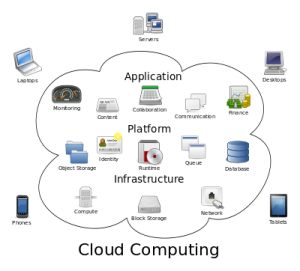
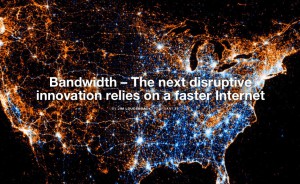
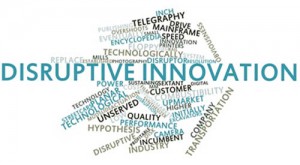
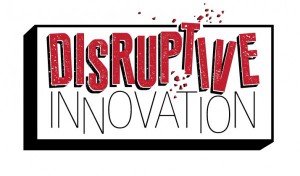
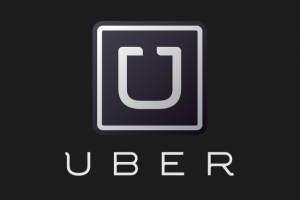
Recent Comments